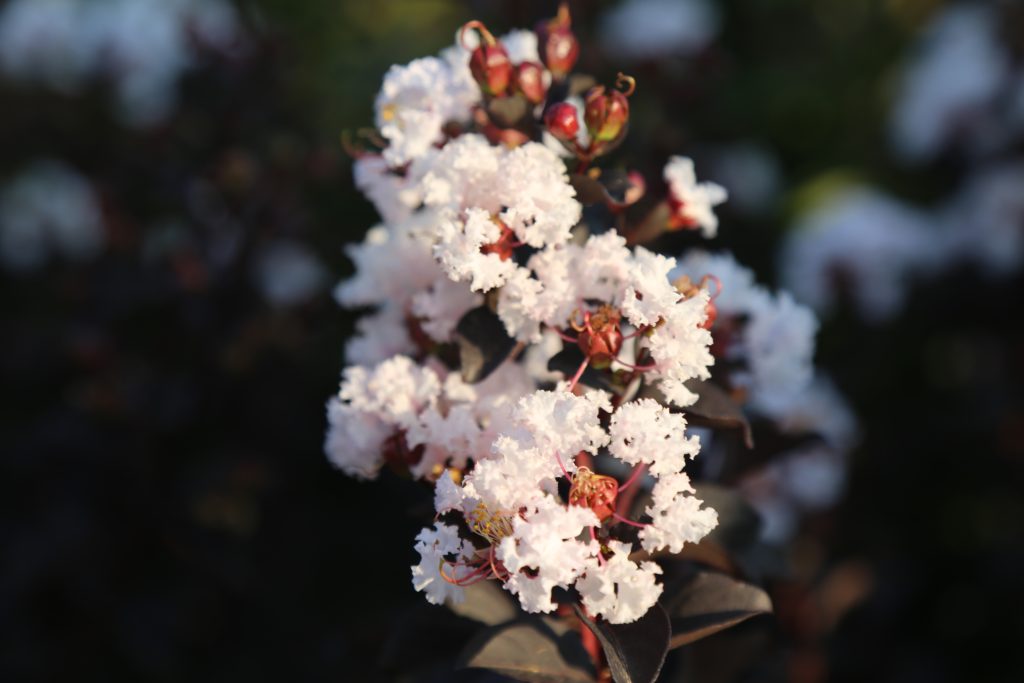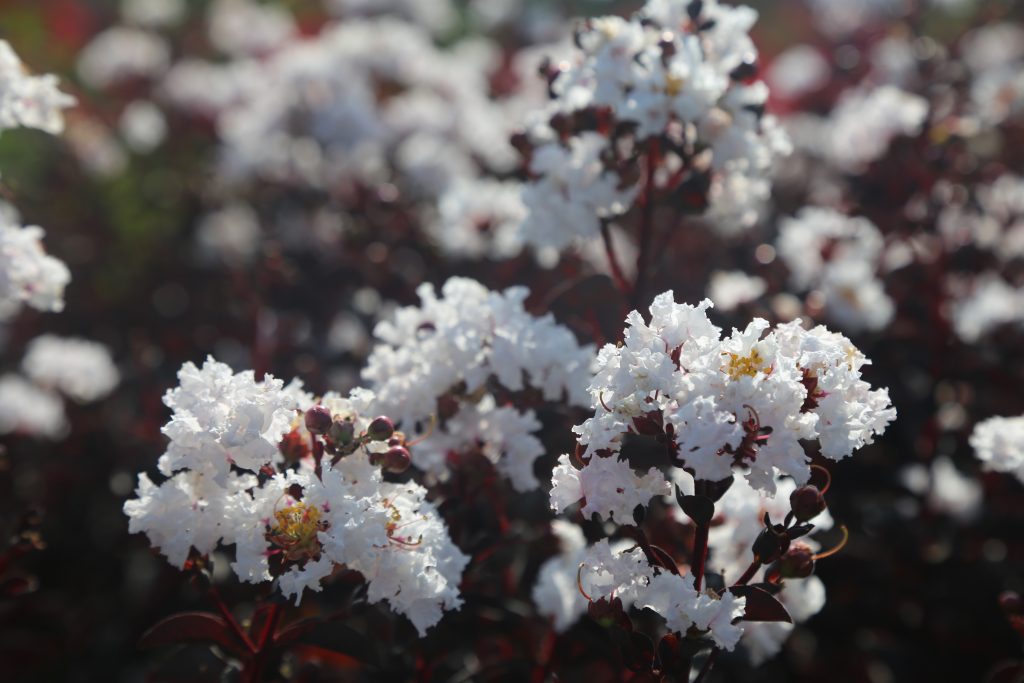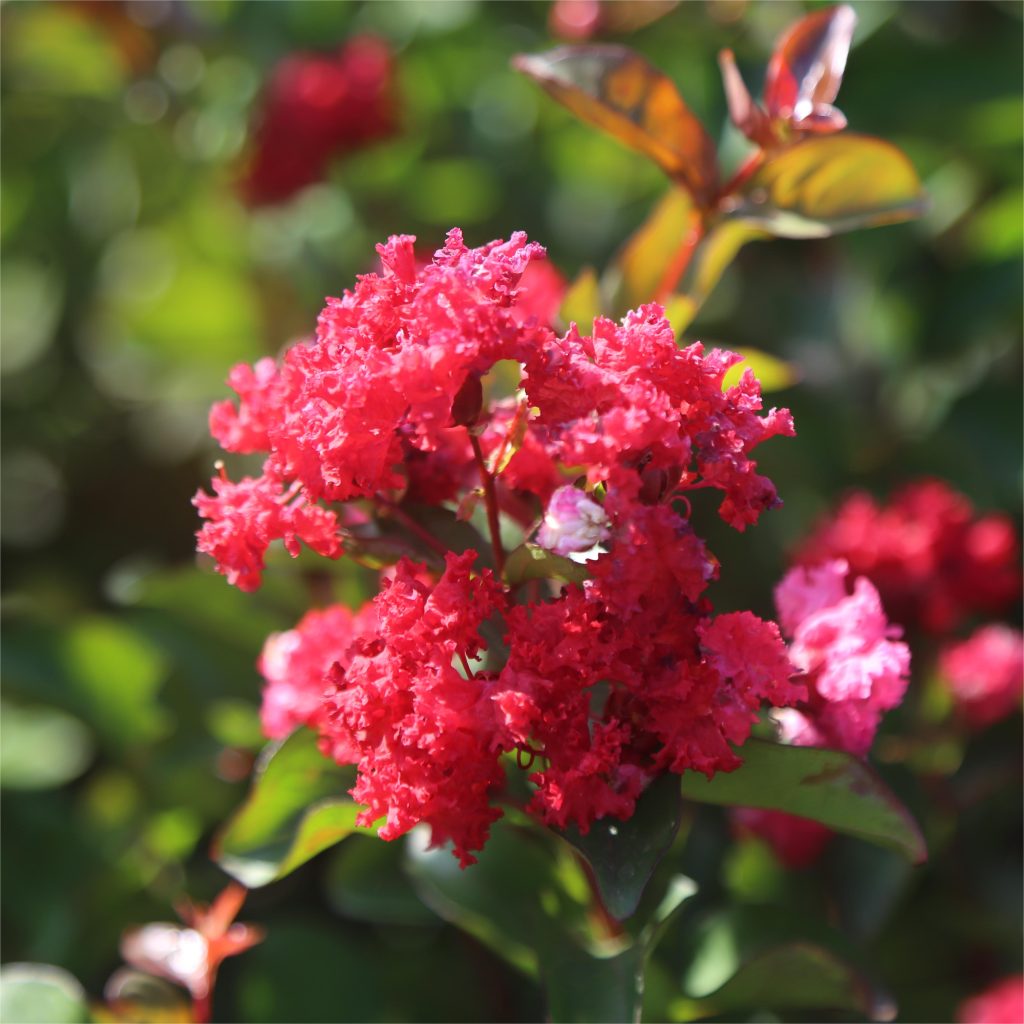저자 소개:
Write by ANHUI FUYANG JINFENG ECOAGRICULTURE CO.,LTD., where gardening expertise meets premium quality plants and trees! With over 30 years of experience, we’ve cultivated a reputation as specialists in providing top-notch flora for all your gardening needs. What began with a few humble plastic greenhouses has blossomed into a sprawling operation spanning about 300 acres.
Crepe myrtle, scientifically known as Lagerstroemia, is a beloved ornamental shrub or small tree renowned for its vibrant blooms and attractive bark. Originating from Asia, these plants have become popular in gardens and landscapes worldwide due to their stunning floral displays and relatively low maintenance requirements. Here’s a comprehensive guide to help you cultivate and care for crepe myrtle in your own garden.
Plant Attributes
Crepe myrtles are characterized by several distinctive features:
- Flowers: They produce abundant clusters of crinkled flowers in summer, ranging in colors from white, pink, red, lavender, to purple, depending on the variety.
- Foliage: The foliage varies from dark green to bronze throughout the growing season, often turning vibrant shades of orange, red, or yellow in the fall.
- Bark: Older crepe myrtles develop smooth, exfoliating bark that reveals mottled patches of cinnamon, gray, and brown, adding winter interest to the landscape.
- Size: They range in size from compact shrubs (3-5 feet tall) to small trees (up to 30 feet tall), making them versatile for different garden settings.
How to Care for Crepe Myrtle
Proper care ensures healthy growth and prolific flowering:
- Sunlight: Plant in full sun for optimal blooming. Crepe myrtles thrive in at least 6 hours of direct sunlight daily.
- 토양: Well-drained soil is essential to prevent root rot. They tolerate various soil types but prefer slightly acidic to neutral pH.
- 살수: Water deeply but infrequently, especially during dry spells, to establish deep roots. Avoid waterlogged conditions.
- 수분: Apply a balanced fertilizer in early spring to promote vigorous growth and flowering.
- Pruning: Prune in late winter or early spring to remove dead or weak branches and encourage new growth and better flowering (more details on pruning below).
Popular Types of Crepe Myrtles
Crape Myrtle ‘Ebony and Ivory’
‘Ebony and Ivory’ is a striking variety known for its contrasting flower colors. It typically features deep burgundy to almost black foliage, which contrasts beautifully with its abundant white flowers.
This cultivar is valued for its dark foliage and the stark contrast it creates with its white blooms, making it a standout in garden beds or as a focal point.
Crape Myrtle ‘Ebony Glow’
‘Ebony Glow’ is another variety appreciated for its dark foliage, though it tends to have a slightly lighter shade of burgundy compared to ‘Ebony and Ivory’. It also produces clusters of pink flowers.
The combination of dark foliage and pink blooms provides a vibrant yet elegant look to garden landscapes. It’s known for its moderate size and attractive appearance throughout the growing season.

Crape Myrtle Ebony Glow Crapemyrtle(Lagerstroemia ‘Ebony Glow’)
Crape Myrtle ‘Like a Latte’ (Lagerstroemia ‘Like a Latte’)
‘Like a Latte’ is characterized by its unique foliage color, which starts as a warm, caramel-like shade in spring and matures to a deep green with hints of red in summer. It features white flowers.
This cultivar stands out for its changing foliage colors, reminiscent of coffee hues, which add interest and warmth to garden settings. It’s a relatively compact variety suitable for smaller spaces.
Crape Myrtle ‘Red Dynamite’ (Lagerstroemia ‘Red Dynamite’)
‘Red Dynamite’ is renowned for its vibrant red blooms, which appear in large, showy clusters throughout summer. It has green foliage that turns orange-red in the fall.
This variety is prized for its intense red flower color, which adds a bold splash of color to landscapes. It’s a fast-growing cultivar that can reach a moderate height, making it ideal for creating dramatic garden borders or hedges.
Crape Myrtle ‘Red Rocket’
‘Red Rocket’ is noted for its bright red flowers that bloom profusely in mid to late summer. It has dark green foliage that turns shades of orange and red in the fall.
Known for its abundant blooms and vigorous growth habit, ‘Red Rocket’ is a popular choice for adding vivid color to gardens. It typically grows as a multi-stemmed shrub or small tree, depending on pruning.
These varieties showcase the diversity within the crepe myrtle family, offering options for different color preferences, foliage characteristics, and growth habits. Whether you prefer deep burgundy foliage with contrasting white flowers or intense red blooms that stand out in the landscape, there’s a crepe myrtle cultivar suited to various garden styles and preferences.
How to Prune Crepe Myrtle
Follow these steps for proper pruning:
- Remove Suckers: Cut off any suckers or growth emerging from the base of the trunk.
- Remove Crossing Branches: Trim branches that cross or rub against each other to prevent damage.
- Thinning: Thin out crowded branches to improve air circulation and light penetration.
- Top Pruning: Avoid topping (cutting across the top of the tree) as it leads to weak growth and unsightly stubs.
How to Propagate Crepe Myrtle
Crepe myrtles can be propagated from:
Cuttings: Take 4-6 inch semi-hardwood cuttings in summer and root them in a moist medium.
Seeds: Collect seeds in late summer, sow them in a seed tray, and keep them moist until germination.
How to Grow Crepe Myrtle From Seed
Growing from seed requires patience:
Seed Collection: Collect seeds from mature capsules in late summer or fall.
Seed Preparation: Scarify seeds (lightly scratch the seed coat) and soak in water overnight before planting.
Planting: Sow seeds in a well-draining medium, keep them moist, and provide warmth for germination.
Transplanting Crepe Myrtle
타이밍: Transplant in early spring or late fall when the plant is dormant.
Digging: Dig a wide hole to accommodate the root ball without disturbing the roots excessively.
살수: Water deeply after transplanting and keep the soil consistently moist until the plant establishes.
Planting Crepe Myrtle
Spacing: Plant shrub varieties 4-6 feet apart and trees at least 10 feet apart to allow for proper growth.
Depth: Plant at the same depth as it was in the container or slightly higher to ensure good drainage.
Overwintering
멀칭: Apply a layer of mulch around the base to protect roots from freezing temperatures.
Pruning: Delay major pruning until after the last frost to avoid stimulating new growth that could be damaged by cold.
By following these guidelines for planting, care, and maintenance, you can enjoy the beauty and resilience of crepe myrtles in your garden year after year. Whether as a focal point in a garden bed or a border along a walkway, these versatile plants bring color and elegance to any landscape.




